get your best deal
FULL-DAY MUSCAT CITY TOUR
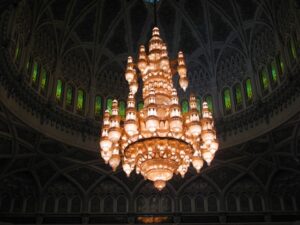
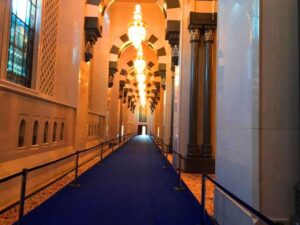
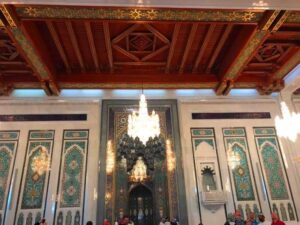
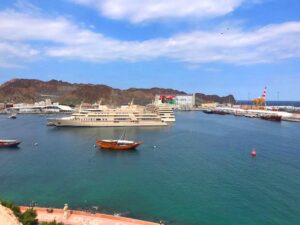
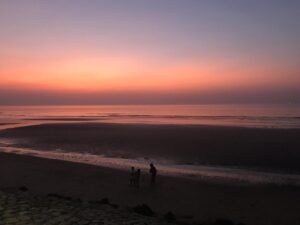
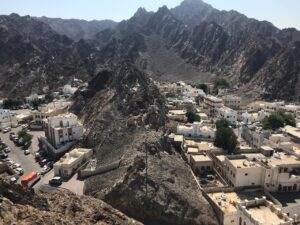
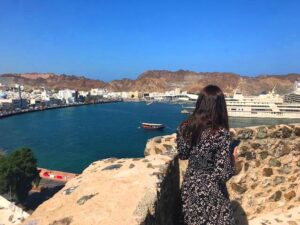
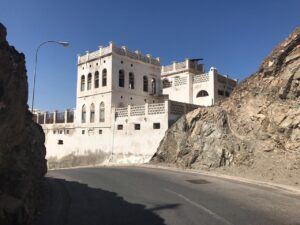
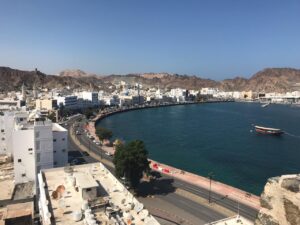
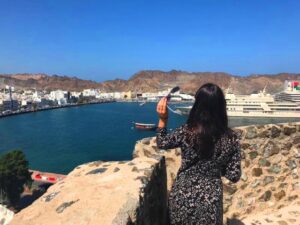
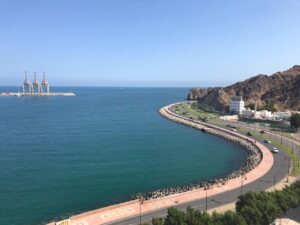
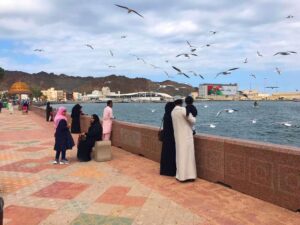
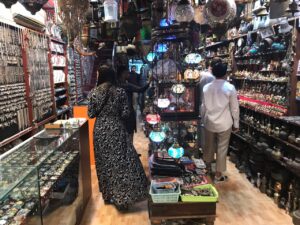
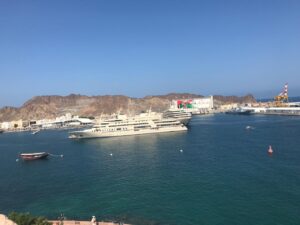
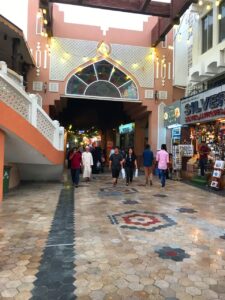
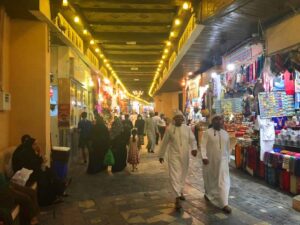
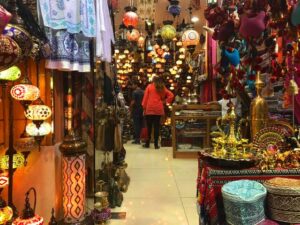
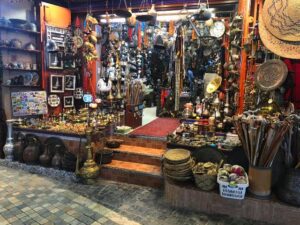
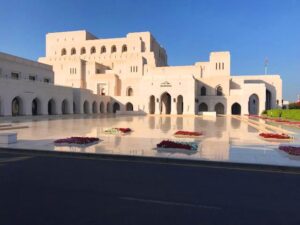
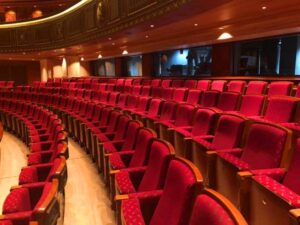
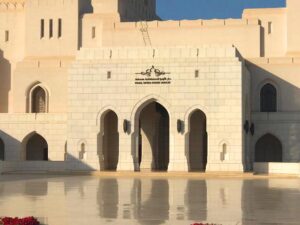
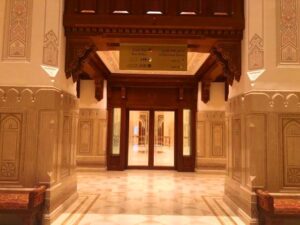
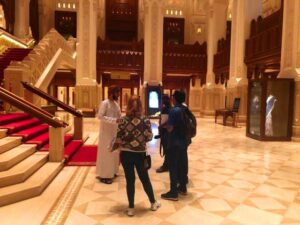
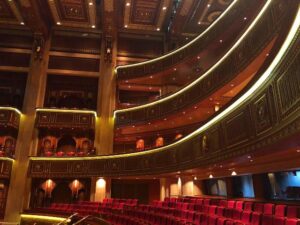
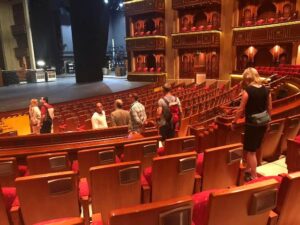
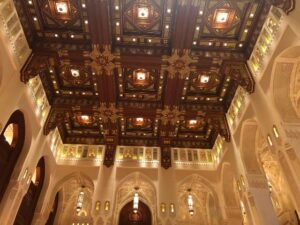
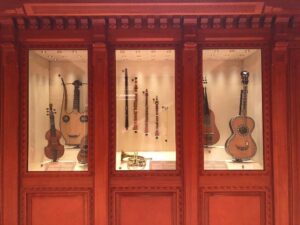
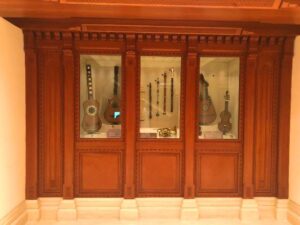
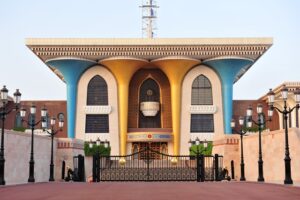
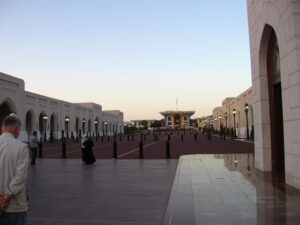

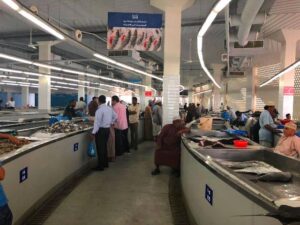

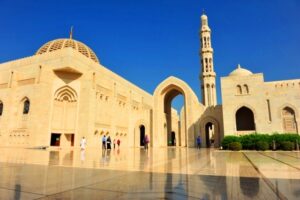
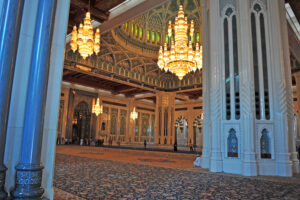
The Mosque is built on a site occupying 416,000 m2 (4,480,000 sq. ft.) and the complex extends to cover an area of 40,000 m2 (430,000 sq. ft.), the newly built Grand Mosque was inaugurated by Sultan of Oman on May 4, 2001, the mosque is made of stone, with doors, windows and embellishments made of wood and glass, around 300,000 tons of Indian sandstone was imported to build the mosque.
Five minarets have been built around the premises of the mosque the main minaret (90 meters, 300 ft.) in height, and the four flanking minarets (45.5 meters, 149 ft.)
The prayer hall is square in shape and 74.4 by 74.4 meters (244 by 244 feet) has a central dome rising to a height of 50 meters (160 ft.) above the floor, the dome is embellished spectacularly from the inside and it is a major tourist attraction in itself, the main Musalla (Prayer Room) can hold over 6500 worshippers, while the women’s Musalla (Prayer Room)can accommodate 750 worshipers, the outer paved ground can hold 8000 worshipers and there is additional space available in the interior courtyard and the passageways, making a total capacity of up to 20,000 worshipers.
The major design of the interior is the prayer carpet which covers the floor of the prayer hall, it contains, 1,700,000,000 knots, weighs 21 tons and took four years to produce, and brings together the classical Persian Tabriz, Kashan and Isfahan design traditions 28 colors in varying shades were used, the majority obtained from traditional vegetable dyes, it used to be the largest single-piece carpet in the world, but is now the second, after the Sheikh Zayed Mosque in Abu Dhabi, the UAE This hand-woven carpet was produced by Iran Carpet Company (ICC) at the order of the Diwan of the Royal Court of Sultanate of Oman.
The carpet measures over 70 by 60 meters (230 by 200 feet), and covers 4,343 m2 (46,750 sq. ft.) area of the praying hall.
Dress code: Women should wear attire covering their arms and legs and should cover their head with a scarf. Men should wear a normal shirt and trousers)
From Grand Mosque on the way to the fish market we drive through ministries and embassies area also we drive through the Marvelous Beach Street in Al Qurum, Visit the Fish and Vegetable Market, local people paying and selling fresh fish and seafood.
From the fish market, just a short drive to Mutrah Souq visit Mutrah Souq, Oman’s largest Traditional Souq, Muttrah Market (Souq) is one of the oldest marketplaces in Oman dating back two hundred years, it is located adjacent to the harbor of Muscat and has seen immense trade in the age of sail, being strategically located on the way to India and China, it was named after darkness because of the crowded stalls and lanes where the sunrays do not infiltrate during the day and the shoppers need lamps to know their destinations, the name of the market has been drawn specifically from the part that extends from Al Lawatiya Mosque to Khour Bimba where the place is really full of stores and stalls and the narrow area of lanes does not allow the sunlight to enter, the market was a source of supply for Omanis where they could buy their needs in the 1960 when life requirements were simpler than today.
In the past, the market was built from mud and palm leaves, which suit the high temperatures and the hard climate conditions and hence were the best available materials to build the market at that time. Today, the Muscat Municipality has renovated and decorated the market to maintain the popular style but has also introduced modern amenities and redecorated the market heavily to attract tourists and make the shopping experience comfortable for tourists as well as other ordinary shoppers.
The market becomes more crowded and active during Eid seasons when Omanis come from all over the country to buy garments and jewelry.
The souq goes by various names: Market of Darkness, due to its myriad of alleys and roads lined by shops that block the sun during the day, the east and west parts are also known as “the small market” and “the large market.
This ancient marketplace today features winding alleys of stalls selling antiques, traditional fabrics, aromatic spices Frankincense, Perfume, Silver, Omani Sweet (Halwa) and fresh produce.
From there visit Muttrah Fort its located on a mountain ridge, overlooking both the city and bay of Muttrah with its towers and ramparts, it was in an ideal position to protect Muttrah from attacks from both the sea and inland, originally an Omani fort said to have been built in the year 1507 the Portuguese later added tow towers and a curtain wall during the latter part of the 18th century the fort underwent further development and enhancement under the al Busaidi dynasty when the curtain walls were doubled and further towers added,Muttrah fort was restored by the ministry of heritage and culture in 1980
From Muttrah fort visit Bait Al Zubair Museum. For a fine display of Omani culture and history and information about the Royal Family.
Continue your trip to visit old Muscat and see the Al Alam Palace, has a history of over 200 years, and was built under the watch of Imam Sultan bin Ahmed, the 7th direct great-grandfather of Sultan Haitham, the existing palace, which has a facade of gold and blue, was rebuilt as a royal residence in 1972, the inner grounds of the palace remain off-limits, but members of the public are permitted to stop near the gates and take photographs, the Palace is used for official functions and receives distinguished visitors
When you visit the main gates of Al Alam Palace, it is unlike any other capital you will ever visit, the palace itself is elegant but humble in design, unlike the grandiose structures of other capitals, elegantly designed, it features many highly polished marble surfaces, government buildings in the vicinity are white, with crenellated rooftops and wooden balconies in the traditional Omani style, though primarily a ceremonial palace, there is a guest villa at the palace with its own pool, spa and walled gardens.
Just right behind the Palace, Jalali and Mirani Forts in the harbor of old Muscat, the Forts were built by the Portuguese under Philip I of Portugal in 1580 on an earlier Omani Fortress to protect the harbor after Muscat had twice been sacked by Ottoman forces, it fell to Omani forces in 1650, during the civil wars between 1718 and 1747, the Forts were twice captured by Persians who had been invited to assist one of the rival Imams, the fort was extensively rebuilt later.
From there visit the Royal Opera house, He is majesty Sultan Qaboos bin Said Al Said Sultan of Oman has been always a fan of classical music and arts, In 2001, the sultan ordered the building of an opera house, and it was officially opened on October 12, 2011, the Royal Opera House reflects unique contemporary Omani architecture, and has a capacity to accommodate a maximum of 1,100 people. The opera house complex consists of a concert theater, auditorium, formal landscaped gardens, cultural market with retail, luxury restaurants, and an art center for musical, theatrical, and operatic productions.
STARTING TIME:
08:30 OR 09:00 AM
INCLUSIONS:
- TRANSPORTATION BY AIR-CONDATIONED VEHICLE SALOON OR 4WD
- ENGLISH SPEAKING GUIDE
- PICK UP & DROP OFF
- ALL FEES AND TAXES
- BOTTLED WATER
- PRIVATE TOUR
- LUNCH
PICK UP INFORMATION
WE PICK UP TRAVELERS FROM ANY PLACE IN MUSCAT
- MUSCAT HARBOR (FOR SHORE EXCURSIONS PASSENGERS)
- MUSCAT INTERNATONAL AIRPORT
- RESIDENCE
- HOTELS
PRICE:
Adults 12 years old and over
1 ADULT
127 OMR
2 ADULT
135 OMR
3 ADULT
143 OMR
4 ADULT
151 OMR
5 ADULT
158 OMR
CHILDREN’S: 5 TO 11 YEARS OLD, 4 OMR PER CHILD
INFANTS : 0 TO 4 YEARS OLD FREE OF CHARGE
CONTACT US FOR A GROUP BOOKING MORE THEN 5 PEOPLE
